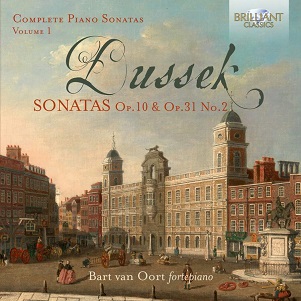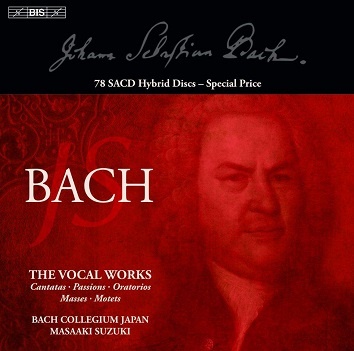
Complete Piano Sonatas Vol.1: Sonatas Op.10 & Op.31
Dussek, J.L.
Bart Van Oort
CD
1 disc(s) 28-02-2018
Classical | Fortepiano
Bestel- en levertijd
De getoonde levertijden (met uitzondering van In Stock-items) zijn enkel en alleen een gemiddelde op basis van de eerdere prestaties van achterliggende groothandels, distributeurs, labels en fabrieken.
Indien er geen voorraad is bij de Nederlandse distributeur, of het label, dan kan het soms enkele weken duren! Dit betreft dan vaak een landelijke situatie.
Neem gerust eerst contact met ons op indien u een deadline heeft. Wij kijken dan meteen of dit haalbaar is! *


| Extra info: | Bart Van Oort |
|---|---|
| Drager: | CD |
| Maatschappij: | Niet aangegeven |
| Label: | Brilliant Classics |
| Barcode: | 5028421955995 |
| Artikelcode: | T86434 |
| Suffix - prefix: | 95599 |
| Solist(en): | BART VAN OORT |
| Instrument(en): | FORTEPIANO |
This disc is the first volume of an extensive recording project using the combined resources of eight world-leading fortepianists. This will amount to the first comprehensive recording of Dussek's piano sonatas on period instruments. It will catalogue the brilliant, harmonically beautiful and expressive music of one of the most fascinating composers at the threshold of early Romanticism, one of Beethoven’s most gifted and original contemporaries. In fact the parallels between Dussek and Beethoven are uncanny on this album, featuring three Op.10 sonatas and then Op.31 No.2 (though the ‘Pastorale’ subtitle corresponds with Beethoven’s Op.28).
The instrument used on this album is a 1798 fortepiano from the firm of Longman-Clementi. It dates from a decade after the Op.10 sonatas and only a few years after Op.31 No.2 from 1795. Accordingly the touch and sound corresponds more closely than any other piano previously used on recordings of this repertoire. Dussek lived in London during the 1790s, and worked closely with the manufacturer John Broadwood to extend the range of keyboard instruments. The English fortepiano lent itself naturally to the harmonic fullness of Dussek's preferred textures, and in reverse, the instrument's characteristic sound and touch inspired and shaped the development of Dussek's compositional style.
Even more important than the instrument is the musician, naturally, and in Bart van Oort these sonatas find an interpreter with years of experience in performing music of this time and place. His complete survey of Mozart’s keyboard music (BC94198) was praised in Gramophone for ‘attractive intimacy’ and ‘sensitive, singing accounts’; his survey of early-Romantic nocturnes (BC92202) is distinguished by ‘strong, authoritative artistry’.
Dussek, J L:
Piano Sonata in D major, Op. 31, No. 2
Piano Sonata, Op. 10, No. 1
Piano Sonata in G minor, Op. 10 No. 2
"Acht fortepianospelers worden betrokken bij de complete pianosonates van Johann Ladislaus Dussek (1760-1812), ook bekend als Jan Ladislav Dusík, want deze kosmopoliet had Boheemse roots. De beroemde pianovirtuoos woonde en werkte in Parijs, Riga en Sint-Petersburg en had al uitvoerige concerttournees door
Nederland en Duitsland achter de rug toen hij begin 1789 neerstreek in Londen, waar hij zijn sonates opus 10 componeerde. Ook de Pastorale sonate uit 1795 werd in die stad geschreven. Daar moest hij vast wel wennen aan de Engelse fortepiano die technisch verschilt van de Weense en meer pianistische kracht vereist, maar ook een vollere, minder lichte toon heeft. Volgens het zeerinformatieve cd-boekje past die het beste bij Dusseks expressiviteit. Zijn muziek ademt de stijl van de klassieke periode, maar is ook ‘empfindsam’ en contrastrijk. Een lyrisch of contemplatief moment kan zomaar omslaan in een stormachtige passage. De sonates zijn relatief kort, bij twee stuks ontbreekt een langzaam deel. Bart van Oort, grootmeester op de fortepiano, bespeelt een gerestaureerd exemplaar van Longman Clementi uit 1799, en hoe! Deze muziek past hem goed, zijn spel is levendig en plezierig en deze mooie opener is een prima smaakmaker voor de complete serie Dussek-sonates."
Klassieke Zaken Magazine 3-2018

















